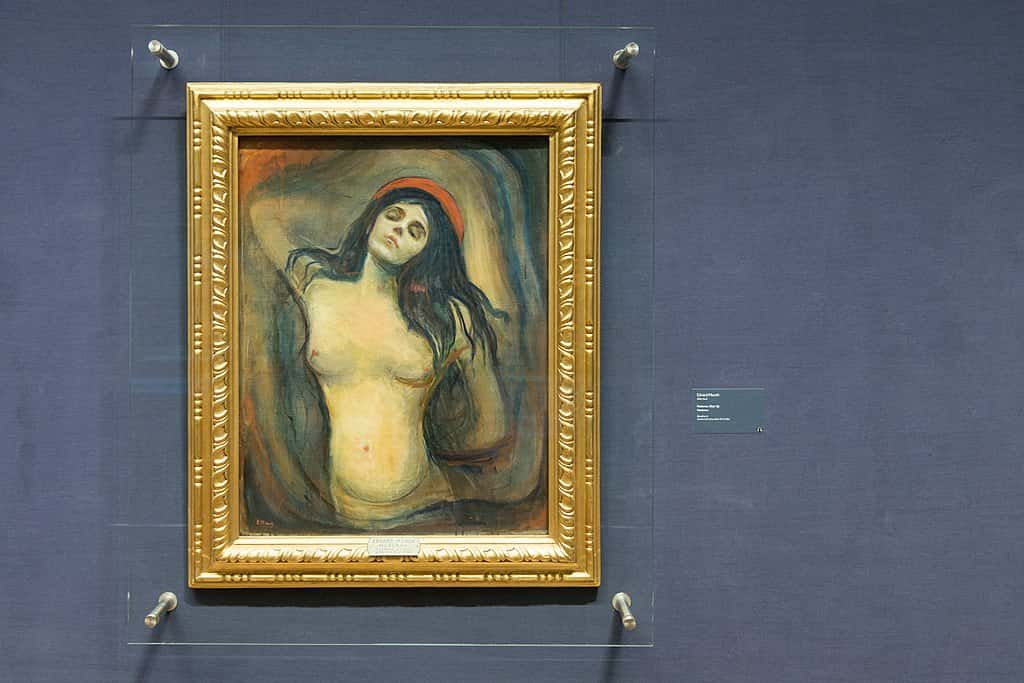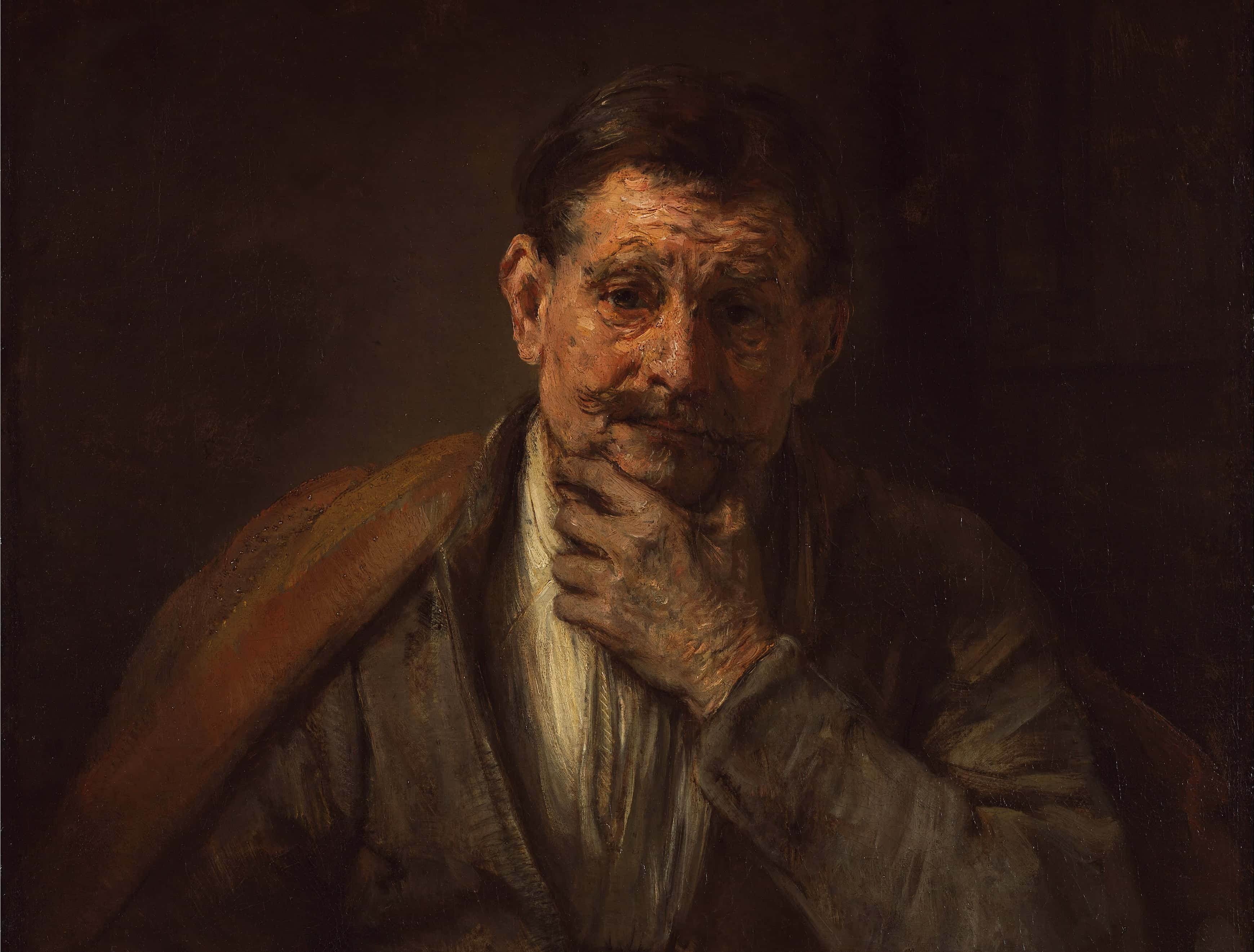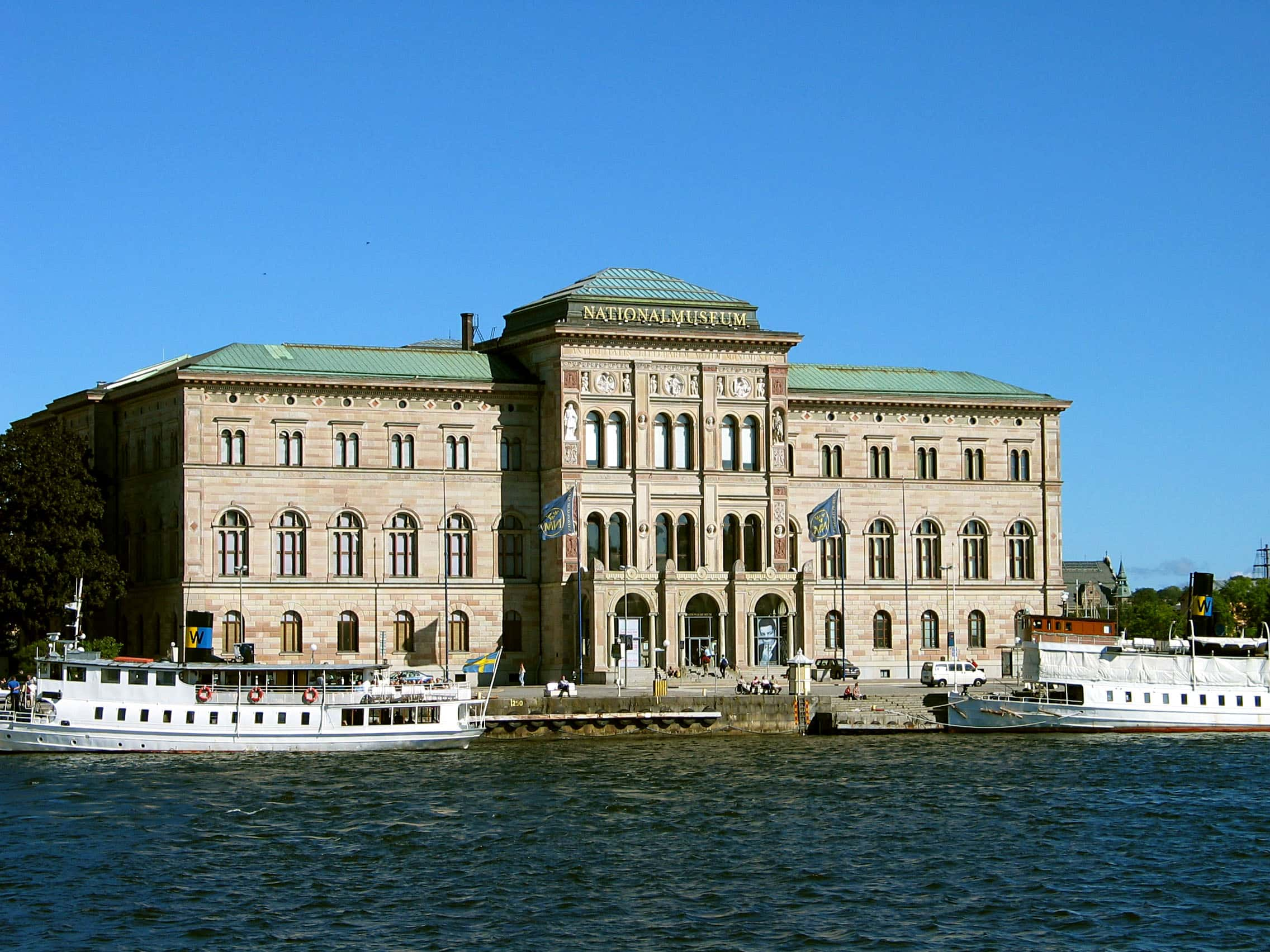From The Thomas Crown Affair to Ocean’s 8, art theft has long been a favorite subject of Hollywood films. And why not? When a single painting can fetch upwards of $100 million dollars, great works of art are irresistible targets for the dark underworld of the criminal market. Several thousand pieces of art are stolen on an annual basis, amounting to losses between $4 and $6 billion.
While most everyday thefts are committed by common criminals, a genuine art heist of a masterpiece (or pieces) is difficult to pull off, thanks to sophisticated anti-theft and surveillance systems put into place by museums and galleries hoping to protect the most valuable parts of their collections. And when these grand art heists are actually pulled off? A large percentage of stolen art is never recovered.
Here are 43 criminal facts about history’s most notorious art heists.
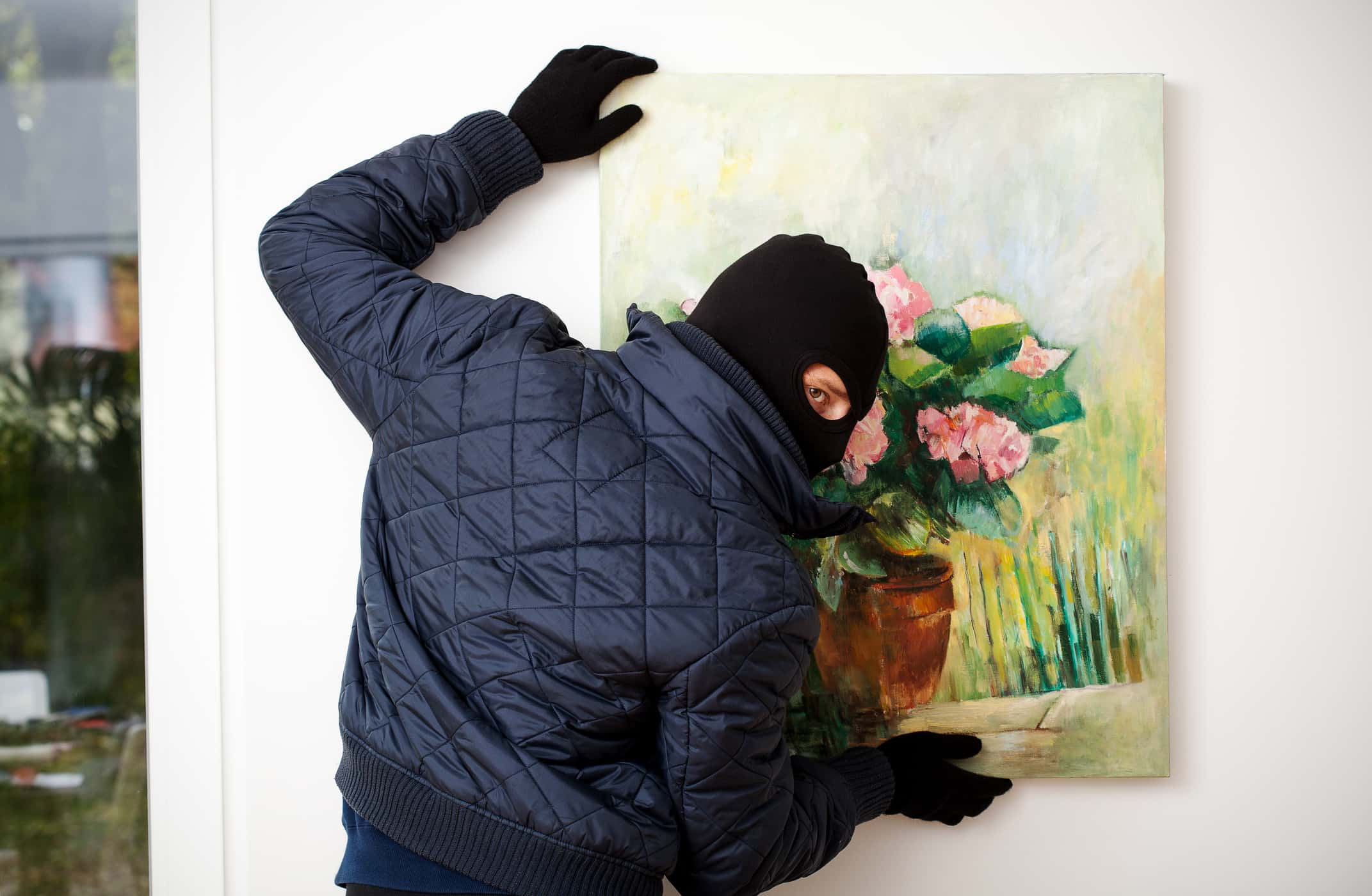
Art Heists Facts
43. Pretend Tourists
If you’re thinking of trying to steal art, pretending to be tourists seems to be a pretty convenient way to go about it. In 2003, two fake tourists stole the renaissance masterpiece “Madonna of the Yarwinder,” believed to have been painted by Leonardo da Vinci.
They took it right off the wall of Scotland’s Drumlanrig Castle, but four years later it was recovered from a law firm in Glasgow. Eight men were charged and the painting found a new home in the National Gallery of Scotland in Edinburgh.
42. Most Frequent Locations
One might think that most art thefts take place in galleries or museums, but this isn’t the case. 54% of all thefts are from private homes, while 8% is taken from churches or other places of worship. With statistics like those, I think they’d all better step up their security!

41. A Unit All Its Own
Art thefts are a unique kind of crime. So much so that in 2004, the FBI established the art crime unit to investigate art thefts and forgeries. There are 16 people on the US crime team and two full-time and one part-time on the UK team, which is ironic, because 40% of all art thefts occur in the UK, while only 19% take place in the US.
To date, they’ve recovered more than $150 million in stolen art, and about 2,600 items. Impressive!
40. Cut and Run
If the 2004 theft of Edvard Munch’s paintings “The Scream” and “Madonna” proved anything, it’s that attaching the paintings to the wall by wires is a pretty dumb idea. The thief literally only had to cut them down and run, which is pretty crazy when you realize that the paintings were worth about $19 million at the time.
Two years later both paintings were finally recovered, but not without having suffered some damage.
39. Masters of Disguise
The biggest unsolved art theft in history took place early in the morning after St. Patrick’s Day in 1990 at the Isabella Stewart Gardner Museum in Boston. The thieves didn’t even try that hard to disguise themselves and wore fake security uniforms and wax mustaches. They claimed they were cops who’d received a call about a disturbance and were there to investigate, so of course, they were able to walk right in.
They proceeded to tie up the guards and steal 13 paintings worth $500 million in less than an hour. Two empty frames, the paintings that once filled them cut away by the thieves, still hang in the gallery to this day.
For a quarter of a century, the heist has remained in the news with enough twists and turns to fill a novel. As of 2018, the FBI has upped the reward for information to $10 million, so maybe some real leads will finally turn up—although the FBI has admitted that the people they think responsible for the theft have since passed away.
38. Missing Masters
In 2008, four paintings by late 19th century masters were stolen from the E.G. Buhrle Collection in Zurich, making it the largest art theft in Swiss history.
The thieves weren’t terribly stylish or original. They wore ski masks and dark clothes and waved a gun at the guards while they took them out from behind the glass.
Further demonstrating that these weren’t the most sophisticated of thieves, authorities later determined that they didn’t even grab the most valuable paintings—they just took the first four they saw. Two of the paintings were found in an abandoned car in Zurich, but the other two remain at large.

37. The Original Heist
Somebody had to be first, and historians believe that the very first art theft was carried out by pirates in 1473. Polish pirates stole Dutch painter Hans Memling’s “The Last Judgement “while it was traveling by ship to Florence.
For some unknown reason, the thieves dropped it off at a cathedral in Gdańsk, Poland, and there it remains to this day, in the city’s national museum. Guess they were just trying to contribute to local culture!
36. Not How They Planned It
In 1972, when career criminal Florian Monday sent a couple of his minions into the Worcester Art Museum in Massachusetts with orders to “snatch-and-grab” Rembrandt’s painting “Saint Bartholomew” and a few other works, the gun was only supposed to be for show.
Unfortunately, a suspicious security guard got in the way and got shot with the gun’s only bullet, making it the first ever armed art robbery.
At this point, Monday realized that he wouldn’t be able to sell the paintings, and not having anything else to do with them, he hid them in a hayloft on a pig farm in Rhode Island. With the kind of twist ending that usually only happens in the movies, all the paintings were recovered.
35. Pilfering Picasso
A good chunk of the world’s art is privately owned, including a Picasso work titled “Buste de Femme 1938,” which had never been lent to a museum or even been seen in public. The owner was a Saudi collector who kept his ownership of the painting totally hush-hush.
According to the owner, nobody knew he owned the painting, but obviously, somebody did, because it was stolen while awaiting pickup for transport to a bank vault for safe keeping. Sounds like an inside job to me!

Sign up to our newsletter.
History’s most fascinating stories and darkest secrets, delivered to your inbox daily. Making distraction rewarding since 2017.
34. Taken Twice
There is something about Van Gogh’s “Poppy Flowers” (also known as “Vase and Flowers”) painting that inspired its theft not once, but twice, from the Mohamed Mahmoud Khalil Museum in Egypt.
The first theft occurred in 1977, but since the Egyptian government refuses to reveal any details about the theft, nobody knows how or why. Whatever happened, the painting was recovered somewhere in Kuwait.
All’s well doesn’t end well it seems, as the painting was stolen again in 2010.
This theft is actually pretty embarrassing. Aside from the fact that the museum let the same painting get stolen twice, the thieves apparently pushed a couch up against the wall to cut the painting out of its frame, and just waltzed out of the museum as casual as can be without attracting the notice of the museum staff.
In a stroke of luck for the thieves, it turned out that only seven of the 43 security cameras were on, and none of the security alarms were armed. Adding insult to injury, the museum wasn’t even busy that day, so there’s really no excuse for anything like that to have happened. The government’s best guess is that it was an inside job, but the painting is still MIA.
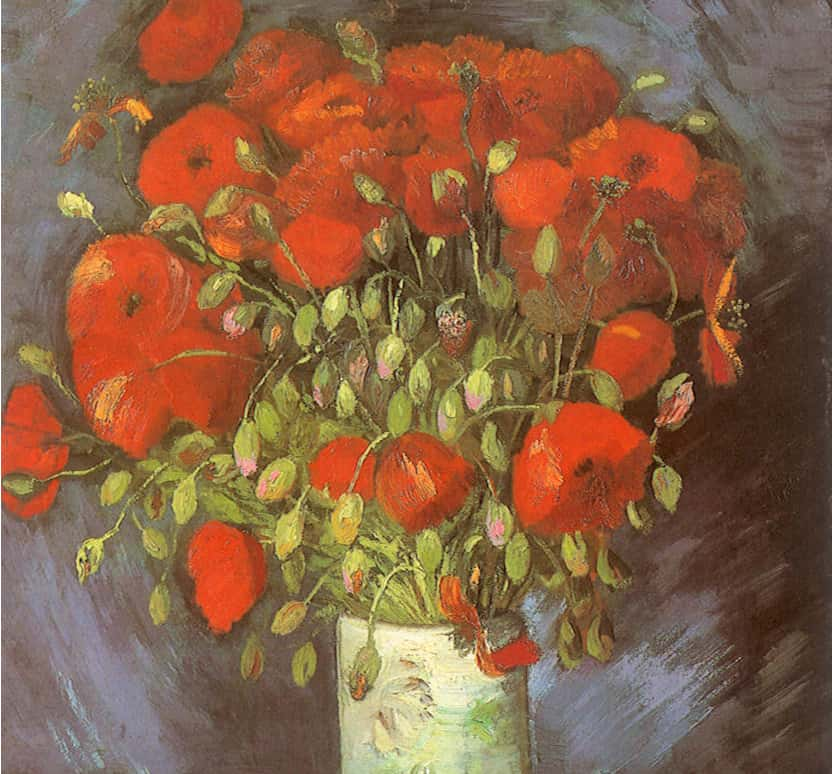
33. Out with the Trash
With most missing art, there’s always a chance—however slim—that it will eventually turn up, but some art is simply gone forever.
The latter is the case with Picasso’s “The Pigeon with Green Peas,” which was stolen from Musée d’Art Moderne de la Ville de Paris in 2010 by Vjeran Tomic.
Dubbed “Spider-Man” due to his penchant for scaling the sides of buildings in Paris to steal jewellery, art, and other valuable objects, this nimble burglar managed to evade police for quite some time, but he was caught after this heist thanks to an anonymous tip.
Unfortunately, his accomplice panicked and tossed the painting in the trash, and in an unfortunate twist, the trash was emptied and removed before the authorities could find it. What a shame!

32. Jacking Jefferson
A rare portrait of Thomas Jefferson was on loan to Polaroid Corp waiting to be photographed when it was stolen from the warehouse safe. The thieves broke into the safe with a hammer and a chisel, and it was ridiculously easy to make off with the painting.
The warehouse had no proper alarm system and no night guard, which really isn’t the smartest way to store a $3 million painting. Even my office desk drawer is more secure!
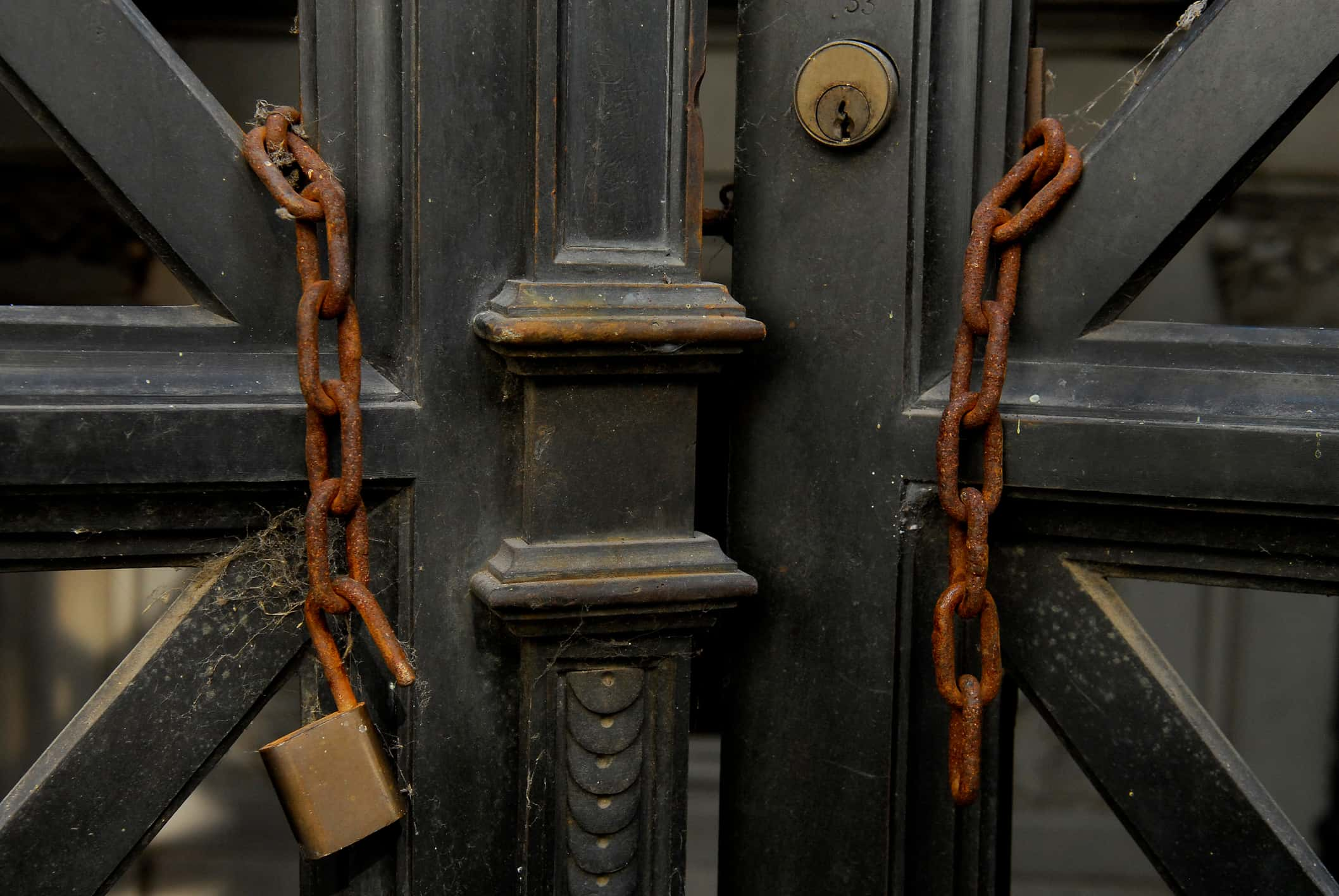
31. Christmas Crime
It was Christmas day in 1985 when over 140 ancient Mayan and Aztec pieces were stolen from the National Museum of Anthropology in Mexico City. Without much difficulty, the thieves managed to open seven glass display cases and remove the art.
The stolen pieces were the most important ones in the collection, leading experts to suggest that the thieves had to have known what they were looking for. Maybe because it was Christmas, the eight guards on duty thought it would be ok to slack off, but they couldn’t take all of the blame.
The alarm system also wasn’t working, which is also pretty ridiculous considering the value of the collection. Some of the pieces were eventually recovered, but the rest were either sold quietly or destroyed, and will probably never be found.
30. He Gave It to Me!
One of the wildest stories of stolen art involves Picasso’s former handyman Pierre Le Guennec and his wife, who stored approximately 271 pieces of the artist’s works in their garage for 40 years.
The story starts when Le Guennec went to Paris to ask Claude Picasso, who managed the Picasso Administration, to authenticate the work. Claude Picasso did, but understandably thought the works were stolen and called the police.
Le Guennec initially claimed that Picasso had given him the works, but Picasso’s family insisted that he always signed and dated anything he was giving away. Le Guennec later offered a different reason for having the paintings, claiming that Picasso’s wife Jacqueline had asked them to store a dozen or so bags full of art after his death, and allowed them to keep one bag.
He said they only lied because they thought they would be accused of stealing them—and they were right!
As for why his widow would ask the couple to store it, nobody knows for sure, but it’s been suggested that she was trying to hide them from her stepson Claude, with whom she didn’t get along. Maybe she just wanted to keep it for herself!

29. The Lost Panel
In 1432, Flemish artist Jan van Eyck completed the Ghent Altarpiece, which became the most famous artwork in Europe at the time. Since then, it’s been the target of a crime a whopping 13 times, with some or all of the painting’s 12 panels being stolen six of those times.
In 1934, two panels were stolen from the Cathedral of Saint Bavo in Ghent. The thieves sent a ransom letter to the Bishop, promising to return the panels in exchange for a million Belgian francs. If he agreed, he was to publish a specific ad in the classifieds of the local newspaper.
Funnily enough, the newspaper scheme was featured in a series of French mystery novels written years earlier by Maurice Leblanc, so maybe that’s where he got his idea.
The police naturally refused to pay up and told the Bishop to publish an ad claiming that the demands were “exaggerated.” The ransomers sent a letter back threatening to slice up the paintings, so what did the Bishop do? He tried to fake them out by pretending to agree.
In exchange, they sent the Bishop a tag for a luggage check at the local train station where they’d stored one of the two panels. Apparently, the prosecutor thought the thieves would also fall for partial ransom, but surprise—they didn’t!
You’d think that someone would have eventually slipped up and given a hint as to where the painting was stashed, but Arsène Goedertier, a stockbroker who confessed to the crime on his death bed, died without actually revealing where it was hidden.
For over 70 years, police have continued to try and find the missing panel, but with no luck. In one final twist, the art restorer, copyist, and forger Jef van der Veken made a copy of the missing panel which he gave to the Cathedral, but this was pretty curious. He started working on it months before the failed ransom attempt, and he did so without anybody asking him to. There is also a cryptic poem written on the back of the panel. What all that means is a mystery for the ages!
28. Cemetery Surprise
Next to The Ghent Altarpiece, the most stolen painting in the world is Rembrandt’s “Portrait of Jacob de Gheyn III," clocking in at four times. The first theft occurred in 1966 when thieves stole it from the Dulwich Picture Gallery in London, along with eight other paintings. The thief abandoned two Rembrandts under a bush, and the rest were found under a bench in a cemetery.
27. Stolen Again
The second time the Rembrandt portrait was stolen was far more comical. The thief walked out of the museum with the painting under his sweater, but he didn’t get too far. He was found cycling around London’s South Circular with the painting in the bike’s basket.
As for why he stole the painting? It wasn’t for money or any sinister reason. It simply reminded him of his mother. Aww.

26. Taken in a Taxi
The third attempt on the Rembrandt used a taxi as a getaway vehicle. This time, the thief most likely stuck the painting in a bag or under his coat, and a few weeks later, the painting was found in a taxi with four men. Details on who the men were and what happened to them are sketchy. One story claims that they were arrested, another that they weren’t charged at all, and yet another that they made a deal to return the painting.
25. Rembrandt, Will Travel
The final theft of the Rembrandt took place in 1983, with the thieves smashing the skylight and sliding down a rope. Very little is known about who took the painting or why it was returned, but it was recovered after police received an anonymous tip telling them that the painting was in the left luggage section of a British military train station in Munster, Germany.
The thief probably realized that he couldn’t sell it, and decided to unload it rather than risk being caught, but that’s pure speculation.
24. We’re in the Monet!
Early in the morning of October 16, 2012, thieves got past a state-of-the-art security system to steal seven masterpieces including a Picasso, a Renoir, and a Monet from the Kunsthal museum in Rotterdam.
The thieves did trip the alarm, but somehow got in and out without being caught, The men met on Tinder, of all places, and they were arrested in Romania in July 2013. Olga Dogaru, the mother of one of the confessed thieves, claimed to have burnt the paintings to protect them, a story which she denied in court. Unfortunately for her, the police did find pigments and nails matching the missing paintings in her fireplace, so she was probably lying about lying.
23. Sending Them Home
During World War II, the Nazis famously went around stealing famous works of art for their own collections. Just before they were set to raid a church in Quedlinburg, Germany, the clergymen hid several artifacts in a nearby mineshaft.
Along came US Army Lt. Joe Meador, who was looking for Nazi resistance fighter supplies when he and his men discovered the shaft. Instead of guarding the art until it could be put somewhere safe, he mailed all of the pieces home. Meador himself never tried to do anything with them, but 10 years after his death, his brother tried to sell them, leading to charges for both men.
22. Crime Doesn’t Pay—Neither Does Colonialism
At the start of the 19th century, Thomas Bruce, the 7th Earl of Elgin and the ambassador to the Ottoman empire—who occupied Greece at the time—took a fancy to the Parthenon’s collection of ancient marble and started moving them to Britain.
Lord Elgin claimed that the Ottoman Sultan said he could remove anything he wanted from the museum that “did not interfere with the ancient citadel's walls.”
In 1816, Elgin sold the collection to the British government to settle some debts, and they housed it in the British Museum.
The Greeks naturally wanted their sculptures back, claiming that the Ottoman Sultan had no authority to give them away, but the Brits have insisted that giving them back would either destroy them, or snowball into further demands from other countries to have their native art returned, which would really suck for European museums.
21. Driving Away with It
Leaving your keys in your vehicle is a pretty good way to get it stolen, and that’s how a truck carrying 28 pieces of art worth about $6.5 million was stolen from a warehouse in Madrid.
Technically the truck was parked inside a warehouse, but the geniuses responsible for the transport left the keys in the glove compartment, making it all that much easier to just drive it out.
To make matters worse, some of the art wasn’t insured. Three weeks later, the men tried to sell one of the missing statues to a junkyard in Madrid for 25 pounds, and the rest of the collection was located in a lockup, leading authorities to reconsider the theory that the theft was an inside job. Amateurs!
20. Heavy Lifting
When you hear art theft, you probably think of something portable like a painting, or a small sculpture, not something weighing 2.1 tons.
Where there’s a will there’s a way, and in 2005, thieves stole the Henry Moore bronze sculpture “Reclining Figure” from the Henry Moore estate in Much Hadham, Hertfordshire.
Obviously, something that heavy required some work to carry off, and it took them 10 minutes and a stolen crane-equipped flatbed Mercedes to do the job. It was seen in Essex the same day as it was stolen, but after that, it disappeared.
Police surmised that it had been sold for scrap metal, for approximately £1,500.
Ironically, the estate offered a £10,000 reward for its return, so the thieves lost out on some serious coin!
19. Stealing from Himself
When two valuable art pieces disappeared from the home of Los Angeles ophthalmologist Stephen Cooperman, it all seemed rather suspicious. The alarm had been turned off, there were no signs of a break-in, and only the two most expensive pieces were stolen.
As it turned out, he’d lost his ophthalmologist’s license and had recently been accused of insurance fraud. It took investigators five years, but Feds found the paintings in a storage locker and were able to convict him of faking the heist. Couldn't he have just sold them?

18. Disappearing Duchess
The portrait of the Lady Georgina Cavendish, the Duchess of Devonshire has had a pretty interesting journey. It inexplicably disappeared from Chatsworth House and turned up in the apartment of a school principal in 1830, trimmed to fit above a fireplace mantle.
The painting changed hands a few more times before ending up in a gallery in London in 1876, where it was promptly stolen. The thief was Adam Worth, dubbed the Napoleon of Crime by Scotland Yard. His aim was to sell the painting for bail to get his brother out of jail, but when his brother was freed without needing the money, he decided to just hang onto it until the next time he needed it.
In 1893, feeling a little ticked that they didn’t see any money for helping to steal the painting, his co-conspirators went to the police and Worth went to prison on unrelated charges.
Four years later, Worth decided to negotiate the painting’s return with the Pinkerton Detective Agency, and the Duchess returned to England in 1901. Worth was also the inspiration for Moriarty in the Sherlock Holmes novels and has featured as a villain in movies and on television.
17.Carnival Caper
A key element to a successful art heist is planning a diversion, and the masterminds behind a 2006 theft of five major works of art from the Museo Chácara do Céu in Rio de Janeiro came up with a doozy!
After entering the museum disguised as patrons, they threatened the guards with machine guns and forced them to shut down the security system. Art in hand, they disappeared into the crowds with the paintings.
As to what happened to them after? Aside from one of the artworks showing up on an internet auction, they’re probably hidden away somewhere secure where nobody will ever find them.
16. Free TV for the Poor
The theft of the Goya portrait of the Duke of Wellington grabbed national headlines when a series of anonymous notes were sent to the press explaining that the painting wasn’t stolen to be sold or destroyed, but was to be ransomed for charity.
The thief turned out not to be a criminal mastermind, but a retired bus driver who was annoyed that the government was spending tax dollars on art while pensioners had to pay for a BBC licence to watch TV. Definitely not your usual motive for stealing a painting!
15. Not Just the Masters
While European art is a popular target for thieves, the theft rate for Native American art is growing, largely because the museums and burial sites where the art is found have less security than a museum or gallery.
To help combat this, the US created NAGPRA (Native Americans Grave Protection and Repatriation Act) to help return artifacts that had been taken from the Native people during Colonization.
 National Park Service
National Park Service
14. New York Heist
The robbers who stole Jean-Baptiste-Simeon Chardin’s “Rayfish with Basket of Onions” from the Manhattan branch of London dealer Colnaghi’s were careful in their planning, but not quite as careful once they got inside.
They broke in through the skylight and dropped down with a rope. So far, so good, right? When it came time to actually steal the stuff, they stepped on a few canvases, and by no means did they steal the best stuff.
Still, the heist wasn’t a total failure. Altogether they made off with 18 paintings and 10 drawings worth between $6 and $10 million. Only about half of the works were ever recovered, making it the largest heist in New York history.
13.Looted Lagash
During the 2003 Iraq war, archaeological sites and cultural institutions were hit pretty hard. The National Museum of Iraq was left unguarded and looters took full advantage. Somewhere between 2,000 and 170,000 items were stolen, including the priceless diorite statue of King Entemena of Lagash.
The permanent loss of such an important piece of art would have been devastating, but thankfully, US officials were able to recover the statue in 2006 and return it to the Iraqi Government.
12. Under Suspicion
The theft of valuable works of art belonging to Dr. Ralph Kennaugh and Angelo Amadio turned into a complicated affair. Initially, the Sherriff didn’t believe them and accused them of being involved in the theft, but after a two-year investigation, they turned up no proof of fraud, no art, and no other suspects.
It also resulted in a lengthy legal battle between the men and their insurance company, who rejected their claim on the basis that they had either concealed information or committed fraud. They still don’t know who took the art, but on the bright side, at least they aren’t suspects anymore.

11. Popular Among Thieves
Considering that there are thousands of year’s worth of art, it’s pretty amazing that the most popular art targeted by thieves is from the 20th century. Art from the 18th and 19th centuries are virtually tied at second, and only a small percentage seem interested in ancient art. Maybe it just looks too old?

10. Stealing Van Gogh
Art thieves sure do love to steal Van Gogh, and in 2002, an international art thief known as “The Monkey” and his accomplice broke into the Van Gogh museum to steal two of his paintings.
The day of the heist, the pair noticed a ladder that was left out by a construction worker. They used the ladder to reach the first-floor window 15 feet above, smashed the glass, and climbed in.
After grabbing the paintings, they used a rope to exit through the broken window and slide back down. In a total bonehead move, they forgot to clean up after themselves and left behind the ladder, the cloth they used to break the glass, the rope, and a hat.
This, of course, was enough evidence to lead the police to the robbers, but they were unable to recover the paintings.
Fast forward 14 years, and the paintings turned up at a warehouse belonging to an Italian crime family, who were under investigation for drug trafficking.
9. Countries of Choice
War-torn countries such as Syria and Iraq are frequently the victims of art heists, but Europe is home to the seven largest hubs for art theft in the world. Interestingly, most stolen works also end up in Europe, so I guess it doesn’t travel far.
8. Not Like the Movies
Everybody loves a heist movie, and art heists are perfect Hollywood fodder. One of the most famous and most popular of these is the 1999 remake of The Thomas Crown Affair, with Pierce Brosnan starring as a billionaire who plans to steal a Monet landscape from the Met simply for the fun of it.
The movie—as great as it is—totally romanticizes art thieves, making them out to be dashing, handsome, and charming. In reality, most art thieves are gangsters and professional criminals, and not nearly as interesting as their Hollywood counterparts.
Also, unlike in Hollywood, most thieves quickly discover that selling their stolen work is almost impossible, due to in part to the attention these high-profile paintings garner, and partly because few people can afford such high prices for purloined paintings.
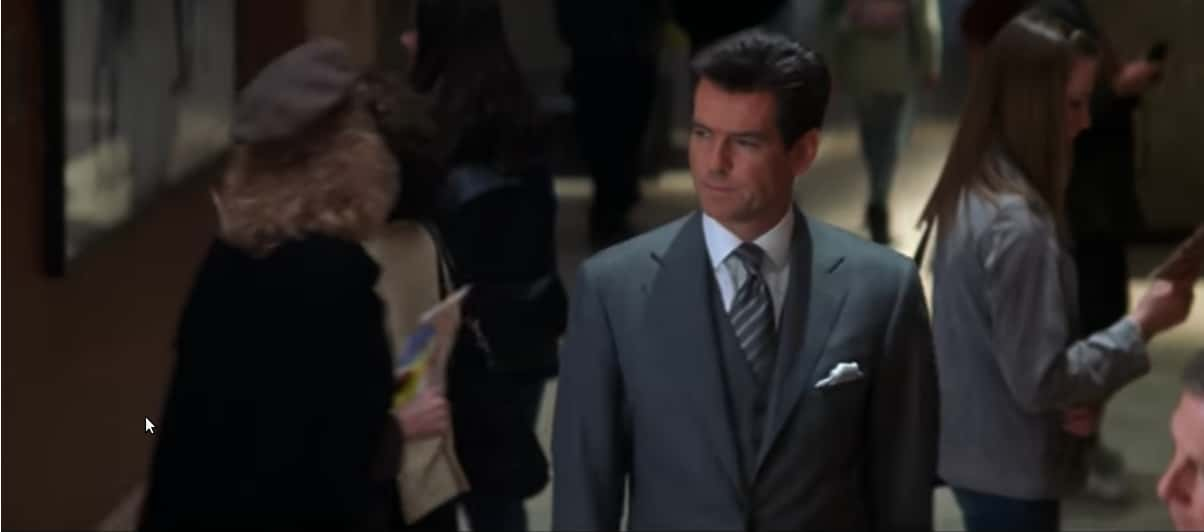 The Thomas Crown Affair
The Thomas Crown Affair
7. Replacing Fakes with Fakes
Xiao Yuan, an art school curator at Guangzhou Academy of Fine Arts managed to make $5.5 million by replacing more than 140 works from the school’s collection with his own forgeries. He copied the paintings over a series of two years between 2004-2006 and sold the real ones through the China Guardian auction house, among others.
As part of his defense, Yun claimed that the practice was common in China, and his expert eye noticed forgeries his first day on the job. Even more unbelievably, he claimed that he noticed that some of his own fakes had been stolen and replaced with other fakes. He did show remorse for his crime, but probably only because he got caught.
6. Finding Art
It’s not surprising that the majority of stolen art turns up in Paris, considered by many to be the art capital of the world. What is surprising is that a small city in Serbia called Arandelovac is the second most common city, exceeding even London, which is third.
The Serbian city is conveniently located between the Middle East and Europe, which makes it a convenient place to try and drop off stolen art from either region. Who knew?
5. New Year’s ‘Napping
Shortly after 1 am on the first morning of the new millennium, thieves successfully broke into the University of Oxford’s Ashmolean Museum and stole Paul Cezanne’s “View of Auvers sur Oise.” This time around, the thieves knew what they were doing.
They used the construction scaffolding at the university library to climb onto the roof and executed some pretty awesome moves to hop across several buildings to the museum.
They broke through the skylight, rappelled down to the gallery, and cleverly blocked the security camera by creating fog with a smoke canister and a fan. All of the smoke set off a fire alarm, which might seem like bad luck, but in the case of this heist, actually helped them get away.
While the guards were busy waiting for the fire department, they grabbed the painting, climbed back up the rope, hopped back across the roofs and disappeared. By the time the police arrived, the painting and the thief were gone.
 Wikimedia Commons
Wikimedia Commons
4. As Seen on TV
During the Turkish invasion of Cyprus in 1974, looters stole several sixth-century religious artifacts from the Cypriot Orthodox Church and smuggled them into the US.
The pieces were thought to be lost forever until Bishop Porfyrios, the church’s representative in Brussels, noticed one of the pieces hanging above Boy George’s fireplace while watching a documentary about the singer—on Dutch TV, of all places.
It turned out that George had bought the piece in 1985, not knowing where it had come from. When the Bishop contacted him, he happily returned it to its rightful home, and as a thank you, the Bishop gave him a more modern replica of the icon. Win-Win!
3. The Lady Vanishes
Today, Leonardo da Vinci’s “Mona Lisa” is one of the most famous paintings in the world, but it was the theft of the mysterious lady in 1911 that truly made the painting famous.
On the evening of August 20, 1911, three Italian handymen camped out in an art-supply closet in the Louvre waiting for the wee hours of the morning to lift her off the wall, frame and all. The next morning, they waltzed out of the museum with the painting covered in a blanket and boarded a train out of the city.
Mastermind Vincenzo Perugia kept the painting in a false bottom built into his trunk and waited 28 months before trying to sell it. Naturally, the dealer was suspicious, and Perugia was busted.
When questioned by police, he tried to claim that Napoleon was behind the theft and he was only trying to return it to Italy, but police weren’t moved by his story, and he was sentenced to eight months in jail.
2. We Weren’t Really Stealing Them
In 2003, some pretty smart crooks managed to get past the guards, dodge the alarms, and avoid security cameras to steal Paul Gauguin’s “Tahitian Landscape,” Vincent van Gogh’s “The Fortification of Paris With Houses,” and Pablo Picasso’s “Poverty,” the three totalling approximately $8 million in value, all from the Whitworth Gallery at the University of Manchester.
The police assumed that the paintings were long gone and were quite amazed to find them rolled up in a cardboard tube and stashed behind a toilet in a public bathroom near the gallery. The thieves left a note claiming that their only intention was to expose the flaws in the gallery’s security, but nobody really believes that. As for what their true motives were? It’s anybody’s guess!
1. A Boat, a Bomb, a Rembrandt, and a Renoir
The theft of $45 million worth of paintings from the National Museum in Stockholm in December 2000 was one of the most dramatic art heists in history.
The three thieves entered the museum aiming submachine guns and pointed pistols at the guards, took a self-portrait by Rembrandt and two small paintings by Renoir, and escaped in speedboats parked in the nearby canal.
At the same time, two parked cars close to the museum exploded, and ground spikes were used to prevent a car chase. Not long after the theft, the museum issued a statement saying that they had no money for ransom, and poof—the police found a painting.
The other two stayed missing for five years before the thief tried to unload them. A dozen or so criminals and shifty art dealers went to jail for their part in the heist.
Sources: 1, 2, 3, 4, 5, 6, 7, 8, 9, 10, 11, 12, 13, 14, 15, 16, 17, 18, 19, 20, 21, 22, 23, 24, 25, 26, 27, 28, 29, 30, 31, 32, 33, 34, 35, 36, 37, 38, 39, 40, 41, 42, 43, 44, 45, 46, 47, 48



